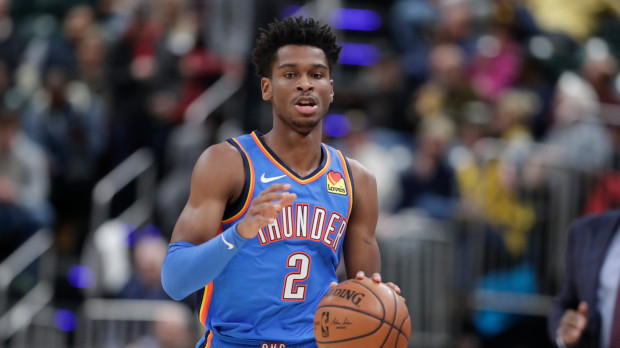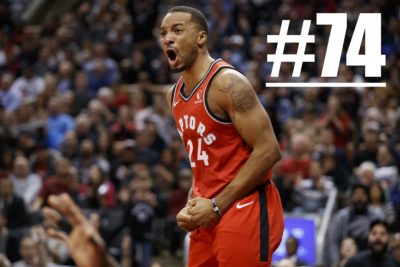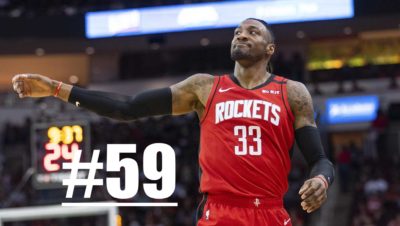To the surprise of no one, the NBA is trying very hard to finish it’s season. Players and owners alike have a watchful eye on dropping revenue, and will do their damndest to mitigate the financial losses that COVID-19 has subjected to their sector. Naturally, there’s a lot left to figure out before anything pops off and based on testing, personnel, quarantine and the possible complications of anything going sideways, it’s going to be a very large amount of work. However, the NBA seems determined to get to the finish line – so I’ve decided to rank the top 100 players to finish the season.
I’ve familiarized myself with every player on this list by watching games, film, and doing stat and play-type research to try and round out any blindspots. If you disagree with any of the rankings that’s all well and good, and you can even say I’m dumb if you so choose. It’s hard to rank 100 players, and I just hope the write-ups are accurate to the player, entertaining, and worthwhile. Thanks for reading.
Before we begin:
- If a player hasn’t played prior to the season’s suspension, they are not considered for the list. Ex. Kevin Durant, Klay Thompson, John Wall.
- This list is made with the assumption that the teams would finish the 82 game season. That isn’t a likely outcome, but the list was made with that in mind.
- If a player has an existing injury that is expected to keep them out going forward, they are not considered for the list. Ex. Kyrie Irving, Clint Capela.
- There is an aspect of momentum to these rankings. If a player was coming on particularly strong at the end of the season (Christian Wood, Malik Beasley) their finish is rated higher than their start.
- I have guest blurbs on a few players from writers I admire and their names will appear next to their blurbs.
- Thank you to resources that make these things much easier: Bball Index, Basketball-Reference, NBA.com/stats, and Cleaning the Glass.
You can find players 100-76 here.
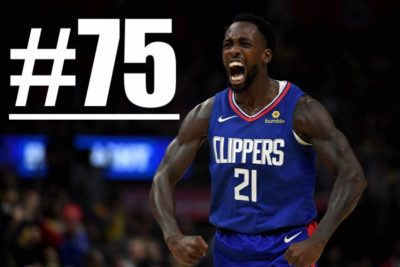
Patrick Beverley – Los Angeles Clippers
Despite Russell Westbrook’s comments earlier this season, Patrick Beverley is the real deal defensively. Seeming to build his game in reverse, Beverley brought an insatiable work ethic on defense and increasingly found ways to chip in on offense. A defender to sick on the James Harden’s and Donovan Mitchell’s of the world, Beverley is nearly infinitely useful on the defensive end, and has elevated himself as a shooter and playmaker who can work off of his more talented teammates on the opposite end of the floor. There’s a lot of value in recognizing your role and maximizing it – and that’s something Beverley has humbly accepted since he entered the league. We’re in the midst of what might be his best season as a pro, and one that could see him in the deepest playoff run of his career.
Norman Powell – Toronto Raptors
A late comer to the 6th man of the year sweepstakes, but one with a lot of momentum, Norman Powell. The Eastern Conference’s reigning player of the week, and a markedly improved shooter and attacker. After Powell stepped up significantly as a spot-up shooter and energy defender for the Raptors, Nick Nurse rewarded him with more possessions on-ball. This, along with a bump in transition possessions, has allowed Powell to get downhill more often and show off the different counters he has for rim-protectors. He’s finishing 68-percent of his attempts at the rim, 40-percent of his shots from downtown, and he’s taking heaps of shots from both areas. He also sustained this level of play while coming back from two separate injuries this season. He navigates screens better than he ever has, both as a shooter and a ball-handler. The steps Powell has taken this year are so large that in other years he’d be a prime candidate for Most Improved Player (Brandon Ingram ran away with it this year), packing on improved efficiency, a larger role than ever, and a boost in usage percentage.
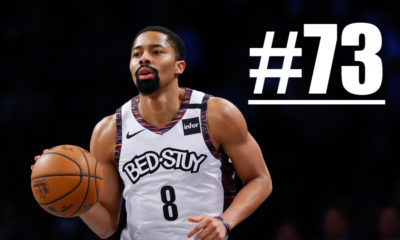
Spencer Dinwiddie – Brooklyn Nets
The Nets have faced a lot of injuries to primary ball handlers on their squad (Kevin Durant, Kyrie Irving, Caris Levert) and that passed on a lot of responsibility and work to Spencer Dinwiddie. Dinwiddie has operated well as a downhill scorer and tertiary option for years, and has voiced on many occasions that he thinks he can hang with any guard in the league. The big bump in usage this year has allowed Dinwiddie to showcase an improved floor-game and bigger numbers offensively, but that was coupled with a drop-off in efficiency and perhaps finally, an answer to Dinwiddie’s ceiling as a primary creator. Still, Dinwiddie provided above average offense to the Nets out of the pick n’ roll and isolation when they were desperate for anyone to provide a scoring punch. If we get to see a healthy Nets team, that likely means a return to the bench for Dinwiddie and much more advantageous looks against bench guards and bench bigs. And hopefully some more catch and shoot opportunities. With all that said, Dinwiddie was the biggest provider in the Nets backcourt as they pushed for a playoff spot, and that’s worth something.
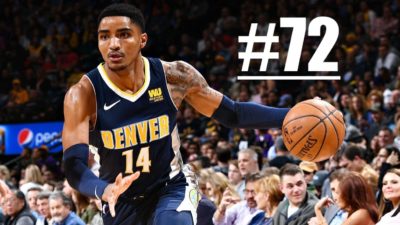
Gary Harris – Denver Nuggets
Gary Harris is a sticky defender. He’s heady and diligent tracking players around the court, and he’s got quick feet to keep up in isolated defensive sequences. Per NBA.com/stats his most quantitative matchups this year were with Devin Booker, Luka Doncic, Andrew Wiggins, and Damian Lillard – of the 60 shots he defended against those four players (on 245 possessions defended), only 17 went in. Better yet, not a single one of those All-NBA level guards (Wiggins excluded, sorry) shot over 35-percent against Harris. Despite Harris’ unfortunate two-year offensive slump, the Nuggets revere his defensive acumen and won’t go away from him. If Harris can recapture his 3-point stroke (it’s been gone for some time, unfortunately) it will revitalize his synergy with Nikola Jokic in the Nuggets offense. While Jamal Murray attempts to take the proper steps to stardom, Harris’ additional ball-handling and scoring is more than necessary.

Malik Beasley – Minnesota Timberwolves
Ah yes, the momentum again. Malik Beasley was buried behind the talents of Jamal Murray, Gary Harris, Monte Morris, and Will Barton for most of the year before being set loose on the Timberwolves. Playing with Nikola Jokic for an extended period of time allowed Beasley to learn how to play off of a big man with a lot of gravity before joining one of the best front-court talents in the league, Karl-Anthony Towns. In his time with the Timberwolves, Beasley has slotted in as high-production third option, and only a smidge behind D’Angelo Russell in the pecking order. He’s gotten a bump in pick n’ roll possessions and he’s taking every opportunity to shake loose in transition. Add on top of that he’s hoisting up twice as many three pointers with the Wolves (8.2 vs. 3.9) and hitting at an even higher rate. The Timberwolves moved heaven and earth to get their number two guy in house, but on the way there they might have found number three.
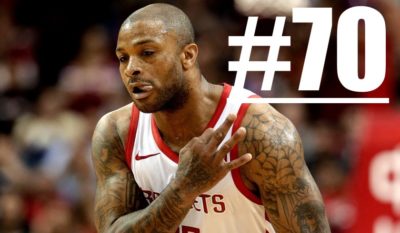
PJ Tucker – Houston Rockets
One of the NBA’s premiere corner shooters. An absolute pillar of the Rockets uber small-ball style. A 6’5” man who plays all of his minutes in the front-court, sparring with players that are significantly bigger than him night after night. P.J. Tucker is a warrior on the basketball court and a military grade adhesive that holds together the delicate balance of the Rockets, by leading them in box-outs, shot contests, screen assists, and corner triples. The Rockets bargained that Tucker would be able to defend big men to a degree that obviously wouldn’t shut them down, but provide enough resistance that they could avoid being destroyed on the inside, and as a result, play their ideal version of offense on the opposite end. Watching Tucker slide his knee under a big man to take away their center of gravity while his opposite leg braces him like Atlas under the heavens is a treat. He’s not immovable, but he wields a deep understanding of what angles are advantageous to him, and an indomitable will. There’s nothing particularly new about Tucker’s contributions this season, they’re just remarkable. He’s second on the team in minutes played, brings it every night, and provides a level of grit and tenacity that is largely unmatched in the NBA.
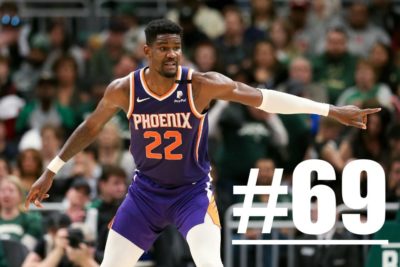
Deandre Ayton – Phoenix Suns
Deandre Ayton flew under the radar in what was a pretty underrated rookie season. Lost in the shuffle of Luka Doncic and Trae Young, Ayton averaged a double-double, scored efficiently, and got lost on defense more often than we’d like to see. After serving his suspension to kick off this year, Phoenix’s budding star has taken gigantic steps as a defender. He became a bona fide backstop to the Suns defense showing a much stronger sense for how to use his size in the paint. Ayton, on average, defended more shots than every other player in the NBA, and affected them on a level that puts him in the company of two DPOY candidates: Brook Lopez and Rudy Gobert. Ayton didn’t take big steps on offense this year, but there’s plenty of time for that as he has the skill and touch to figure things out in a hurry. It’s particularly meaningful for him, and the Suns, that he’s turned the corner defensively.
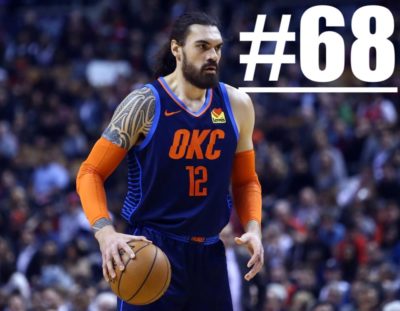
Steven Adams – Oklahoma City Thunder
Like most big men, Steven Adams is a de facto ceiling raiser in the NBA. Perpetually near the top of the league in screen assists and box-outs. Adams makes his impact by significantly improving the Thunder’s ability to clean up their own defensive glass, carving out tons of space for Chris Paul and Shai Gilgeous-Alexander on offense, and punishing teams that can’t keep his brute strength from eating ORBS (offensive rebounds). Despite his defense becoming overrated – perhaps because no one would try to score on the real Khal Drogo – he’s good enough that the Thunder never have to bend to the whims of small-ball. He’s very good in his role, but not overqualified for it.
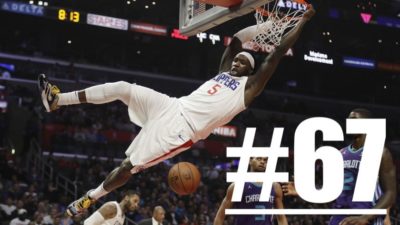
Montrezl Harrell – Los Angeles Clippers
One half of the NBA’s most dynamic bench duo, Montrezl Harrell has been likened to the energizer bunny many times and for good reason. He’s one of the NBA’s most prolific roll men with smooth footwork and explosive finishes. There’s definitive power to his game, and an underrated sense of space. Harrell’s pace as a dive man is constantly changing as he mixes in bursts of speed or chopped foot steps to maintain or create passing angles for his pick n’ roll counterparts. Of the 20 players who most frequently roll to the rim, Harrell is the second most efficient as far as production, and near the top in entertainment value. He can take over a game in a pinch as a scorer or a hustle player earning extra possessions on the glass, and he’ll put opposing bigs in foul trouble. He’ll be a major factor in the playoffs for the Clippers.
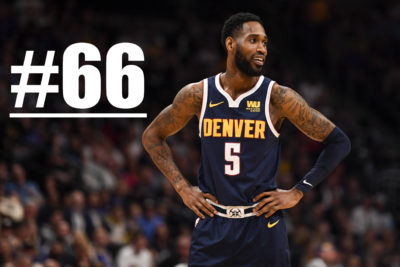
Will Barton – Denver Nuggets
Jamal Murray is recognized as the Nuggets second star next to Jokic, and paid that way as well. However, for much of the season, Will Barton gave him a run for his money in that role. An occasionally explosive, but more often crafty Barton has carved out a sizable role in the Nuggets offense. He’s slick going downhil, and there’s no substitute for creative players in the NBA – Barton provides a big boost to the Nuggets on both ends of the floor. Both Murray and Gary Harris are prone to slumps in their games, and Barton’s consistency and veteran presence provides a steady calm to the Nuggets back court, in what’s been his best season as a pro.
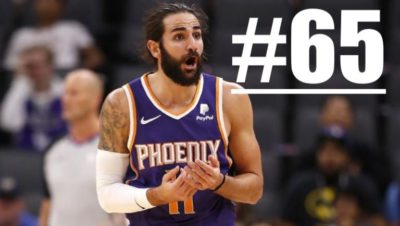
Ricky Rubio – Phoenix Suns
When the Suns nabbed Ricky Rubio as a free agent they (in my mind) were guaranteeing a handful more wins than in years previous. He might not be the point guard that the Suns envision winning championships next to Booker, but he significantly raises the floor of the Suns and allows for Booker & co. to get some wins under their collective belt. Even though Rubio has major limitations as an off-the-dribble threat, he’s masterful as a passer, much improved as a catch and shoot option, and has been one of the league’s best guard defenders for some time now. It’s hard to stick him with a screen and he causes tons of havoc above-the-break. Catch-all metrics typically have Rubio comfortably in the top-50 because of his overall floor game. It’s not as easy to see or communicate why Rubio’s teams play better with him on the floor compared to high-volume guard threats, but his teams reap the rewards either way.
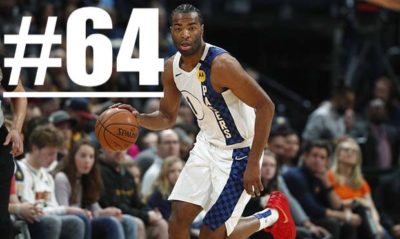
TJ Warren – Indiana Pacers
With the injury to Victor Oladipo still looming large for this year, the Pacers looked to acquire consistent and dependable talent to hold things down while they waited for their star to return – TJ Warren arrived in Indiana ready to provide both. Warren, fresh off a season with the Suns where he had successfully translated his proficiency from the mid-range to beyond the arc, proved to be more than a philosophical fit, but a very tangible addition to the Pacers offense. Warren wiggles into the crevices and cracks of opposing defenses via screens, flash cuts, or simple relocation. He’s an exceedingly intelligent player when it comes to navigating screens or a moving defense for his own shots, and once the ball is in his hands he’s a bona fide shotmaker. For a player with his offensive output he demands very little in the way of possessions, but he can create his own shot in a pinch if the situation calls for it. He also fits into Indiana’s defense better than a lot of people might have imagined. Altogether, he’s had a great year with the injury-laden Pacers, but can bump up his value even more by providing more to a version of the Pacers with a higher ceiling.
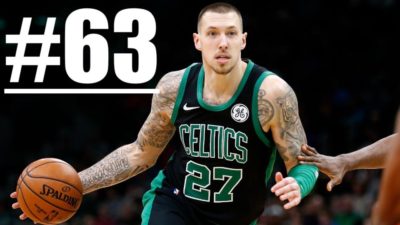
Daniel Theis – Boston Celtics
The young trio of Jayson Tatum, Marcus Smart, and Jaylen Brown receive heaps of credit for the superb defense played in Boston, and rightfully so. However, Daniel Theis’ contributions as back-stop are widely underrated. The big man out of Germany has been the Celtics best defender this year, and a lynchpin in their defense. No one contests more shots on the Celtics than Theis, and his versatility at the bigger positions allows the team to switch more freely, allowing Tatum, Smart and Brown to flex their muscles above-the-break more often. Theis is a subtle offensive player, too. Greasing the wheels for the Celtics offense is well within his wheelhouse – setting screens, grabbing offensive boards, and making decisions as a passer in split-action sets. He’s got a great knack for cuts to the rim, drag screens in transition and with Brown, Tatum and Gordon Hayward’s love for snake-ing the pick n’ roll, Theis can slip a screen in on the primary defender and seal the dropping big on the same play. He’s not scoring as much as Al Horford had in years past, but he’s provided a lot of the same tangible “glue-guy” attributes as the former Celtic.
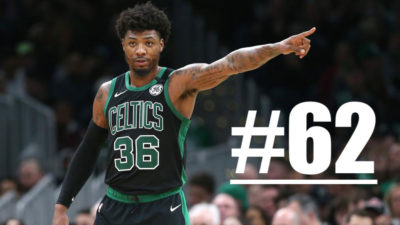
Marcus Smart – Boston Celtics
Marcus Smart is the king of the tie-up. When a player comes into the lane with the ball cradled in one hand or both, Smart’s rebar enforced forearms latch on and restrict all movement until the whistle is blown. He can push the league’s best scorers straight to the baseline or sideline. He’ll reliably switch across four positions and fight like hell against each one. Watching him crawl and scrape over screens is closer to performance art than basketball. Smart is like a Hercules beetle, possessing strength that belongs to something much larger than himself. He’s still a tragically bad finisher at the rim, and his shooting remains wonky (significantly better when pulling up) but he’s the sharpest he’s ever been as a playmaker. Smart is a legitimately good creator for the Celtics when given the opportunity, and when taking his defense into account, any type of progression on the offensive end makes him a major plus for his team.
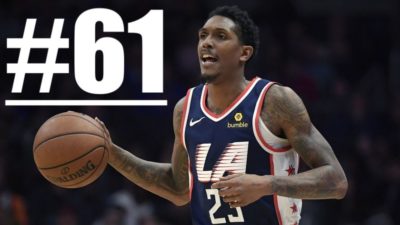
Lou Williams – Los Angeles Clippers
Learning the ins and outs of the pick n’ roll just might add an extra 5 years onto Lou Williams’ career. He has always been a capable scorer, and one that used isolation a lot, but that put a ceiling on how consistent and efficient his contributions could be. His quick-trigger and overall shiftiness makes him a nightmare to guard in 2-on-1 situations and the seemingly symbiotic on-court relationship he’s developed with Montrezl Harrell has added another layer of dynamism to his possessions, and provided the foundation from which almost all of the Clippers bench success comes from. At this point, over 50-percent of his possessions are coming in the pick n’ roll, and he’s provided a steady calm to a Clippers offense that has had to endure injuries to their stars. He can lift up a bench unit, or heat up in a matter of seconds next to elite players. The mismatch seeking style that the playoffs sometimes falls into can be worrisome as teams attempt to hide his mediocre defensive efforts, but on the other end he can dismantle every player a team will throw at him. All this makes him one of the most intriguing bench players we’ll see in the playoffs.
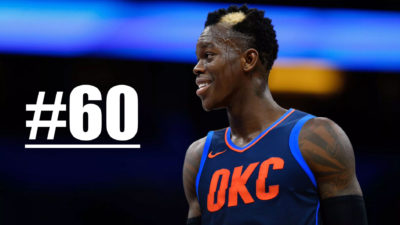
Dennis Schroder – Oklahoma City Thunder
The lead man of one of the best bench units in the NBA, Dennis Schroder has made his mark in Oklahoma City. A big reason for OKC’s success this year has been their dominance in the clutch – 42 games with clutch time, 29-13 record, and by far the NBA’s best clutch team per net rating – and Schroder is a staple of their finishing lineup. It’s really enjoyable to watch Schroder lift up the OKC bench while Chris Paul gets much needed rest, but the real treat is watching them harmonize together in late game opportunities. Seemingly taking tips from Paul, Schroder’s pace and guile in the pick n’ roll and attacking the basket have improved dramatically as he’s finally eclipsed 60-percent shooting at the bucket. Having 4 players average between 17 and 20 points (Danilo Gallinari, Shai Gilgeous-Alexander, Paul, Schroder) speaks to an incredibly egalitarian offense, one that Schroder has quickly elevated himself in.
Robert Covington – Houston Rockets
Robert Covington is, full stop, one of the best defenders in the NBA. As soon as his feet hit the hardwood he begins terrorizing the opposing squad. Covington can switch across the top of whatever defense he’s playing and force some of the NBA’s best ball-handlers to the baseline. He’s opportunistic with his hands and his help-side defense, often taking a step in for a weak-side block or a sly swipe. He boxes out, he sets screens, and he does his best to space the floor for Russell Westbrook and James Harden. He is, admittedly, a wildly inconsistent shooter from downtown, and there’s very little in the way of ball handling or counters in his offensive game. He’s amorphous defensively, without position, and an absolute whirlwind who does nothing but cause the right type of chaos for the Rockets.
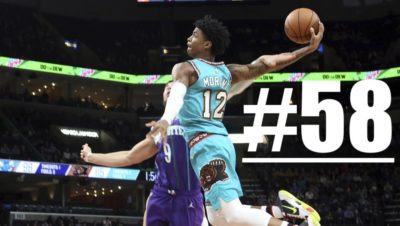
Ja Morant – Memphis Grizzlies
Not even 60 games into his NBA career and Ja Morant is already one of the most electrifying players in the league. His in-air creativity as a passer is unrivalled, as he can hang forever and sling the ball to any spot on the floor. He’s a reckless attacker, emboldened by his jaw-dropping athleticism – pulling out euro-step packages that would rupture most humans quadriceps on impact, but slyly scooping to the rim after pulling it off. He’s also the only player who successfully utilizes the “I’ll jump in the air, take contact, and then decide what to do with the ball” strategy. He’ll take off from near the free throw line consistently, looking to get a Mario double-jump style bounce off of the dropping big, and still find time for a pass or a stunning finish. Morant is a terror off the dribble and in the open floor, and those moments are unquestionably his best. He bounds up the court and freezes defenders with the slightest head nod or drop dribble. His defense is sub-par, naturally, his jump-shot is a work in progress, and he’s a rookie guard who (obviously) hasn’t figured out all of the nuances of attacking an NBA defense. He’s got growing to do, of course, but the well of talent he pulls from is so deep that you’ll see him make truly inspired basketball plays every game. He’s not yet built the foundation of his game, which will come, but he flashes his ceiling too often to be any lower on this list.
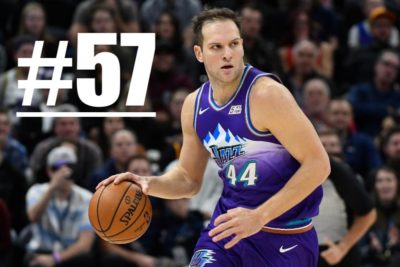
Bojan Bogdanovic – Utah Jazz
After getting some All-NBA attention in previous years with the Pacers, Bojan Bogdanovic (fittingly) joined the cast of underrated pseudo-stars in Utah. Within the framework of the Jazz, Bogdanovic has provided a steady stream of efficient offense. He’s the spot-up king on the Jazz roster, comfortably working off of the attention given to Rudy Gobert and Donovan Mitchell – while he’s not a fireball off of pin-downs and screens like Terrence Ross, Bogdanovic moves the chains often enough on secondary actions, and has become a late-clock release valve for the Jazz offense. After growing a bit as an overall creator in Indiana, Bogdanovic has slid back a little bit towards strictly three-point shooting, which takes away from his underrated ability to finish at the rim. He has great body control and pace downhill. He’ll likely emerge more as an off-dribble threat in the playoffs.
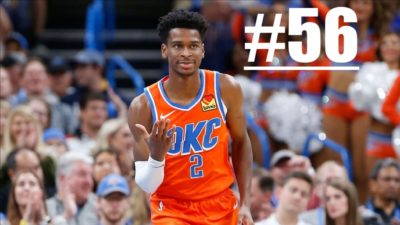
Shai Gilgeous-Alexander – Oklahoma City Thunder
Canada’s next star. In his second year and under the tutelage of Chris Paul, Shai Gilgeous-Alexander has flourished. There’s a snake-like fluidity to his drives that keeps big men on their toes, and his steps are long, like Giannis Antetokounmpo.Just because he gathers the ball near the 3-point line doesn’t mean he won’t finish at the cup. Add on to all of that a wonderful sense of when to change speeds and a body capable of complying. He’s as smooth as the finest sandpaper in the world, and combining that with his length makes him lethal. A natural progression was for ‘SGA’ to sprinkle some pull-up jumpers into his game, and while the outside shot is still a work in progress his stop and pop in the lane is really impressive.
Gilgeous-Alexander is growing on the offensive end, no doubt. However, with the embarrassment of riches the Thunder have on that end of the floor, the length and defensive pedigree ‘SGA’ brings might be even more important for this rendition of the Thunder. He’s one of the best rebounding guards in the league and really brings that on the defensive glass; closing possessions, and getting the fastbreak started. The aforementioned length makes him versatile and disruptive on defense, and he’s got a great sense of when to gamble vs. staying home. He isn’t yet, but there shouldn’t be much hesitation in predicting ‘SGA’ to be one of the most impactful guard defenders over the next 10 years. The Thunder were put in a tough position last summer, but they made the best out of it – and so has Gilgeous-Alexander.
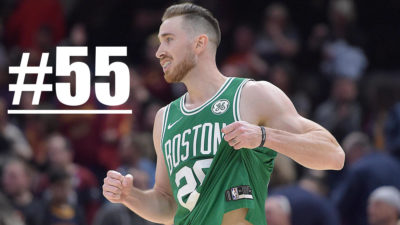
Gordon Hayward – Boston Celtics
It took a long time for Gordon Hayward to get back to the player he was prior to his horrible injury, and he’s not that exact player now, but he’s come back in a big way this season. I’ve yet to see a team comfortably guard the staggered screens action the Celtics run for him at the top of the arc. His handle isn’t flashy, but it’s tight, and his size makes him really hard to stop downhill – he shoots 75-percent at the rim! If he gets a guard switched onto him, he’ll bully him into the paint, or shoot over him. And he’s still quick enough to slip past big men if they step up, but if they drop, Hayward has been one of the very best mid-range operators in the NBA this season. His control in the middle of the floor is staggering as a passer, a shooter, and a driver. His utility as a screener has never been higher, and the Celtics love putting him in the middle of actions because his reads are so consistently clever. Jayson Tatum and Jaylen Brown have both taken sizable steps this year, but Hayward has been an extremely underrated piece next to them in Boston.
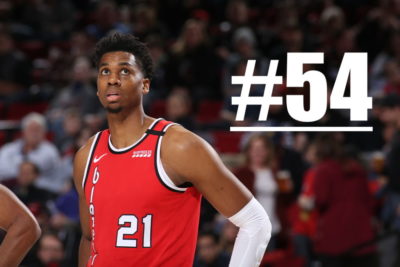
Hassan Whiteside – Portland Trailblazers
A lot of people soured on Hassan Whiteside in Miami, and roughly the same amount of people had doubts about how he would fit in Portland. In reality, that was more about the ascension of the fantastic Bam Adebayo. The rumours of Whiteside’s demise were greatly exaggerated. Whiteside is still a beast in the paint on both sides of the floor. He’s one of the league’s best rebounders, closing defensive possessions and granting extra attempts on the offensive end.
Damian Lillard has taken on a huge scoring load this year, and Whiteside – although a lazy screen setter at times – remains a reliable obstacle for Lillard’s defenders to navigate. Whiteside’s biggest contribution this year though, has to be his defense at the rim. The Blazers asked Whiteside to patrol the paint this season, and he’s been one of the NBA’s best deterrents in that area this season – holding players to less than 50-percent shooting within 6-feet this year. A renaissance defensively and partnering with Lillard in the pick n’ roll has given new life to Whiteside’s career, and provided the Blazers with more than a stop-gap for the return of Jusuf Nurkic.
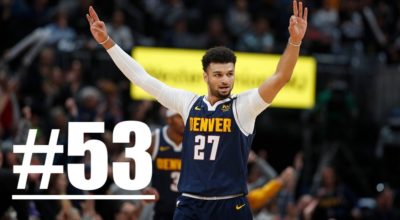
Jamal Murray – Denver Nuggets
Nikola Jokic is the obvious heart of the Nuggets, but most teams need, at the very, least a second star to win. The Nuggets are waiting for the other shoe to drop with Jamal Murray. Recently signed to a max extension, and with size for cuts toward the rim and a terrific shooting stroke, Murray looks the part of the second guy next to Jokic. Only, Murray’s game is far too inconsistent to be considered a second guy, and he still finds himself in the comfort of the Nuggets high-floor but low-ceiling version of Jokic + next man up. None of this is to say that he won’t eventually be a great second star next to Jokic, by the way. His skills are what put him so high on this list. Murray is a heat-pump with the ability to tear a hole in a defense’s gameplan in a hurry. He has great size at his position and has a soft touch at the rim, but doesn’t find himself in that range nearly enough. He’s got a honey-sweet shooting stroke, but too often utilizes it rising up for contested shots in the mid-range. He has all the tools to take that next step, and the success will come along with the application of a more savvy floor game.
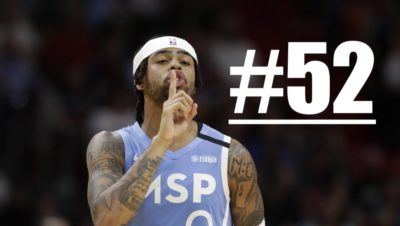
D’Angelo Russell – Minnesota Timberwolves
‘DLo’ is a marvel to watch on offense. He can extend his range well beyond the three-point line, and he’s one of the most gifted passers in the NBA because of the reads he’s able to make while in motion. Russell has a criminally slow first-step that limits his ability to get downhill vs. defenses, but his size grants him access to passing angles few guards see, and makes him (paired with his shooting touch) a really dangerous pull-up threat, even against big men. On top of that, he is legitimately one of the NBA’s very best mid-range maestros. He has a lot of counters that lead to difficult shots, and enough go in that it’s impressive and fun, but he’s not creating enough reliable offense to drive a system or a team. Now that Russell is paired with Karl-Anthony Towns, the hope is that some more efficient attempts will fall into Russell’s lap as he works off of one of the league’s best scoring bigs. Russell has always presented a tantalizing amount of offensive potential with his size and skill with the basketball – we’re just waiting to see if the Timberwolves can motivate any type defensive effort from him (of which there is little) while building one of the league’s best offenses.
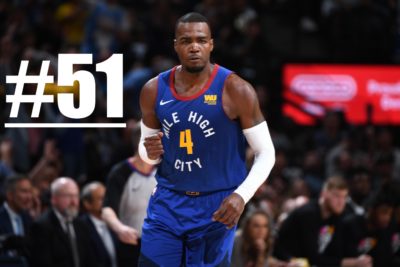
Paul Millsap – Denver Nuggets / Via Joe Wolfond
Millsap might be the least flashy good player in the league. Everything he does is subtle, but that doesn’t mean it isn’t hugely valuable. His offensive game isn’t what it used to be, and he can no longer play big minutes, but at 35 Millsap remains one of the game’s biggest defensive floor-raisers. The Nuggets ranked 29th in defensive efficiency before signing him in 2017. They’ve been top-12 each of the last two years, and the timing of the turnaround is no coincidence.
Denver refashioned its scheme last season, opting to protect Nikola Jokic by bringing him up high rather than dropping him back in the pick-and-roll. Millsap has been the key to making it work. When Jokic hard-hedges out on the perimeter, Millsap quarterbacks rotations and anchors the back line behind him. When opponents choose to go at Millsap directly by using his man as a screener, they often find themselves stymied as he traps, hedges and recovers, or blankets guards on switches. Few big men have better hands.
The Nuggets can use him as a wing defender whose primary task is to body up a bigger ball-handler and dig down from the strong side, or as an interior help defender who roves off a non-shooter and swoops in from the weak side to stunt at a driver or disrupt a play at the rim. He has an uncanny knack for sniffing out set plays, and a prescient sense of timing for when to abandon his man and help. As the low man, he’s as good as any player at blowing up pick-and-roll dives. You’ll almost never catch him out of position, leaning the wrong way, closing out to a bad shooter, or getting duped by a decoy.
It’s not like he’s an offensive zero, either. He can’t drive efficient scoring on his own, but he’s a low-maintenance scavenger who doesn’t stop the ball, gripe about touches, or step on anybody’s toes. He still has a solid post game; he’ll duck in and bully a smaller defender in a pinch. And he’s a good enough outside shooter to garner a defense’s respect, even if his 44% clip from 3-point range this season was a significant outlier.
There will never be any fit issues with Millsap. Every team in the league could use him.
The next installment is coming Monday, June 22nd and will feature players 50-26.
Have a blessed day.

